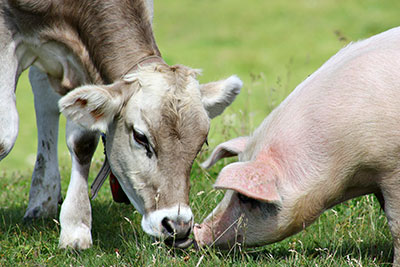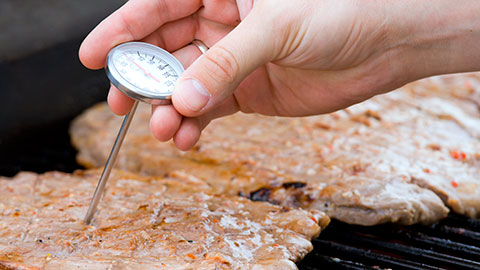What is brucellosis?
Brucellosis is an infection caused by the bacteria, Brucella. These germs mainly live in cattle, pigs, goats, and sheep.

What are symptoms of brucellosis?
- Flu-like symptoms, such as fever, headache, weakness, sweating, chills, muscle aches
- Over time, if untreated, infection can lead to arthritis, swelling of testicles, depression, and infection of the lining of the heart (endocarditis)
Symptoms can start to appear 5 days to 5 months after someone is exposed to the bacteria. It usually takes 1 to 2 months before you feel sick.
How does it spread?
Brucellosis spreads mostly through:
- Eating and drinking raw milk and unpasteurized (not processed and sterilized) dairy products.
- Direct contact of wounds (cuts in the skin) and mucous membranes (e.g., eyes or mouth) with infected animal tissue, body fluids, or placentas (an organ found in most pregnant mammals).
Infection from breathing in the germs has been reported in laboratories and slaughterhouses. Brucellosis mostly occurs in people who work with infected animals and animal tissue. It rarely spreads from person to person. However, brucellosis can be passed through breast milk. If you are breastfeeding and have brucellosis, speak to your health care provider for more information.
How is brucellosis treated?
If you or your child develops symptoms, see your health care provider. Treatment may include antibiotics (medications that kill bacteria) and supportive care for symptoms or wounds.
If not diagnosed and treated properly, the infection can last for months.
How is it prevented?
Preventing brucellosis relies on the elimination of the disease in livestock. The Canadian Food Inspection Agency maintains Canada’s brucellosis-free status by detecting and controlling the spread of infection in livestock.

Ways to prevent infection include:
- Wash your hands often with warm water and soap, especially before and after preparing foods and before eating.
- Avoid eating undercooked meats or unpasteurized dairy products.
- If you work in or visit a place that works in slaughterhouses, meat processing plants, and butcher shops, follow precautions asked of you by the facility. This includes wearing proper protective equipment and having proper ventilation. Wash your hands before and after and disinfect contaminated areas.
- When hunting, use gloves and protective clothing when handling animals. Wash your hands properly. Avoid eating animals that appear sick and bury animal remains properly.
- Thoroughly wash wounds and keep them clean.
For more information contact the Health Unit or speak to your health care provider.
- Government of Canada – Canadian Food Inspection Agency – Brucellosis:
http://www.inspection.gc.ca/ - Ontario Ministry of Health and Long-Term Care – Brucellosis
References:
Heymann, D.L. (Ed.). (2015). Control of communicable diseases manual (20th ed.). Washington, DC: American Public Health Association.
Government of Canada. (2016). Fact sheet - Brucellosis. Retrieved from http://www.inspection.gc.ca/animals/terrestrial-animals/diseases/report….
Ontario. Ministry of Health and Long-Term Care. (2014). Infectious diseases protocol, Appendix A: Disease-specific chapters, Chapter: Brucellosis. Toronto, ON: Queen’s Printer for Ontario.
Ontario. Ministry of Health and Long-Term Care. (2015). Brucellosis. Retrieved from http://www.health.gov.on.ca/en/public/publications/disease/brucellosis….

